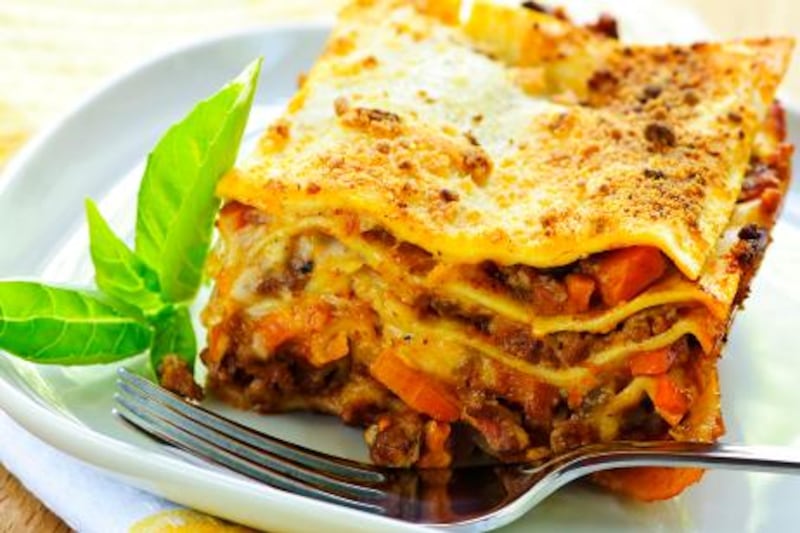Fish pie and lasagne are both hearty, warming meals that provide instant comfort. I don't mean to suggest that they are unhealthy; a home-cooked version of either will always be a preferable choice to a fast-food dinner. However, it is worth being aware that both dishes can pack a rather hefty calorie punch, particularly in a restaurant. The white sauce and mash in the fish pie are likely to have been enriched with butter and cream and lasagne, with its minced red meat, layers of pasta and rich, cheesy béchamel sauce is by no means a virtuous choice.
They are also both rather wintry. With the weather getting warmer every day, the following recipe (which combines elements of both dishes) is nice and light and makes for an interesting, slightly unusual summer supper. It doesn't use any butter or cream, the prawns are an excellent source of low-fat protein and salmon contains essential omega-3 fatty acids and is rich in vitamins and minerals. The European asparagus season is just around the corner, so the vegetable should be at its best over the coming weeks. All in all this is a tasty, healthy meal.
Seafood lasagne
Serves 2
2 tsp groundnut oil 1 skinless salmon fillet 1 garlic clove, peeled and finely chopped 1 shallot, peeled and finely chopped few sprigs thyme, leaves picked 8 king prawns, shells removed and deveined 4 sheets fresh or dry lasagne pasta 8 spears asparagus, trimmed lemon 8-10 cherry tomatoes 150ml low-fat crème fraîche handful rocket leaves salt and black pepper
Heat a teaspoon of groundnut oil in a non-stick frying pan. Season the salmon on both sides and add to the pan. Cook for 4 minutes on one side, flip over, remove from the heat and cover with tin foil. The residual heat from the pan will ensure that the salmon continues to cook as you prepare the rest of the dish.
Add the remaining oil to the pan, along with the garlic and shallot. Cook over a low heat for 4-6 minutes, stirring occasionally, until the shallot is softened but not coloured. Stir in the thyme leaves, followed by the king prawns and the tomatoes. Cook gently for 2-3 minutes, until the prawns are opaque and almost cooked through. Pour in the crème fraîche, season with a squeeze of lemon juice and a few twists of black pepper. As soon as the sauce begins to bubble, remove from the heat.
Bring a large pan of salted water to the boil. Add the asparagus and lasagne sheets and blanch for 3-4 minutes or until cooked. Drain, reserving the cooking water.
While the asparagus and lasagne sheets are cooking, flake the salmon into pieces and add to the pan containing the prawns. Stir and return to the hob to warm through. Add a couple of tablespoons of the asparagus cooking water if the sauce seems too thick.
To serve, place a sheet of pasta on each plate. Pile on the salmon, asparagus and prawns (reserving some of the sauce). Lay a second lasagne sheet on top, spoon over the remaining sauce and top with a small handful of rocket leaves.





